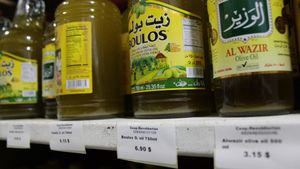Traffic chaos unfolded across southern Kyushu following heavy snowfall, leading to significant disruptions on the Kyushu Expressway and other major routes. The severe weather, which began affecting the region on February 5th, resulted in road closures and substantial delays for thousands of commuters and travelers.
According to local reports, sections of the Kyushu Expressway from the Kagoshima North Interchange to the Kurino Interchange were closed, causing detours and long traffic jams on alternative routes. Kado Kohei, the Administrative Director at Kayo Hall, shared his experience: "I usually reach Aira City from Kagoshima City within just over an hour, but this time it took nearly three hours. The jam particularly worsened once I entered Aira City, and I later learned there was an accident at the railroad crossing." His frustrations echo the sentiments of many who found their regular commute disrupted.
The impact was felt not only by daily commuters but also significantly affected transport services. Heavy snow and falling trees led to the closure of numerous roads, creating ripple effects throughout the transportation network. Particularly affected was Route 10, where delays were reported from early Saturday on February 6th. One company executive from Osaka, Yamazoe Ansei, stated, "I adjusted my schedule earlier, but I was genuinely worried about missing my flight. The reopening of the expressway was such a relief for me.”
Local authorities reported traffic jams stretching up to five kilometers along Route 10, as motorists were forced to navigate through the congestion to reach Kagoshima Airport. Delays on airport shuttle services increased as well—traveling from Kagoshima City to the airport, which normally takes about 40 minutes, was extended to over two hours due to the detours. Passengers expressed their distress at the airport, with one stating, "I arrived here on the airport bus after three and a half hours; I’m exhausted. I missed my flight and hope to reschedule for tomorrow."
The disruptions were not limited to personal travel but also impacted freight and logistics operations. Seiko Transport, which typically moves vegetables, flowers, and eggs from Kagoshima to the Kansai area, announced significant delays. President Toshiro Toribe commented, "We had to inform our clients about the delays, and thankfully, they were quite understandable. We will continue monitoring the weather and ensuring we maintain smooth operations for the sake of consumers during these challenging conditions."
By the morning of February 6th, road managers and authorities were scrambling to address the chaos. Reports indicated multiple closures, including portions of the South Kyushu Expressway and Routes 3 and 225, severely limiting access between key locations within the region.
Traffic was expected to normalize gradually as conditions improved, but the concerns surrounding the stability of weather patterns remain prevalent. Ongoing local advisories urged residents and travelers to stay informed about current road conditions before embarking on their journeys.
Despite the snowfall tapering off as per weather forecasts, the after-effects of the cold snap create an atmosphere of uncertainty for the days to come. The local government and transportation authorities continue to keep vigilant for possible future snow-related disruptions.
The changes and responses from transportation authorities have been reflective of the unpredictable weather, with both commuters and transport companies taking necessary precautions during these significant weather disruptions. It’s clear from the experiences of those affected this past week, the interaction between heavy snowfall and transportation can lead to unanticipated challenges for residents and visitors alike.



